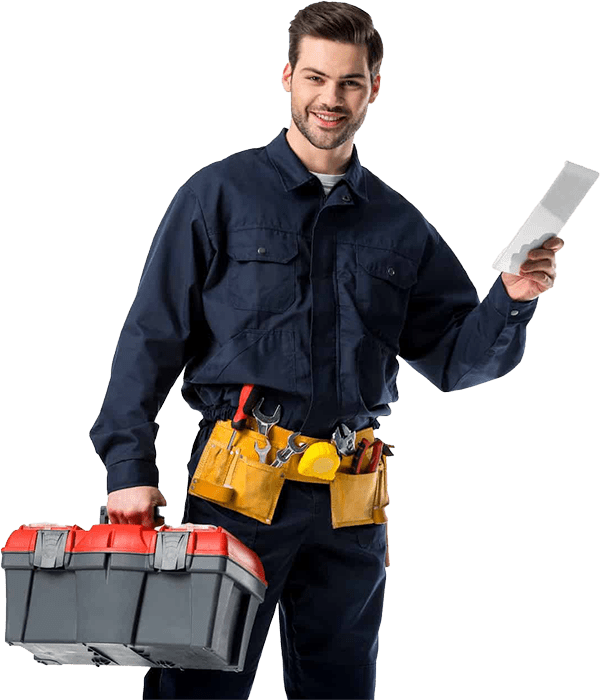Owning an oven often leads to the assumption that it doesn’t require much attention, as long as it’s functional. However, dismissing oven maintenance can result in a host of problems that can impact your well-being, safety, and finances. In this blog post, we’ll delve into why taking care of your oven is crucial and explore the many benefits that come with it.
Oven maintenance should be a priority for several compelling reasons. To begin with, it plays a pivotal role in averting potential fire hazards and the dangers of carbon monoxide poisoning. Over time, a neglected oven can accumulate layers of grease, food remnants, and other debris that pose a substantial risk of catching fire or emitting toxic fumes when heated. Regularly cleaning your oven significantly reduces the likelihood of such accidents, ensuring the safety of your loved ones.
Secondly, oven maintenance contributes to financial savings and energy efficiency. A well-maintained oven operates with enhanced efficiency and consistency, resulting in less wasted heat and reduced electricity bills. Moreover, it prolongs the lifespan of your appliance, potentially sparing you from costly repairs or the need for a premature replacement. By investing in oven maintenance, you not only safeguard your finances in the long run but also reduce your environmental footprint.
Thirdly, maintaining your oven at its best can significantly elevate the quality of your culinary endeavors. A clean oven offers precise temperature control, preventing unwanted flavors or odors from infiltrating your dishes. It also acts as a barrier against bacteria and mold growth, safeguarding your food from spoilage and potential health risks. Keeping your oven in optimal condition can lead to the enjoyment of tastier and healthier meals.
It’s evident that oven maintenance holds more significance than meets the eye. It ensures your safety, saves you money, and enhances your culinary experiences. In the following section, we’ll provide you with straightforward yet effective tips on how to maintain your oven correctly.
Basic Maintenance Practices
Now that you understand the importance of caring for your oven, let’s delve into some fundamental maintenance practices that will help you keep it in top shape. These are straightforward steps you can incorporate into your routine to prevent common issues and extend your oven’s longevity.
The foremost and most crucial practice is regular cleaning of your oven. This entails wiping down both the interior and exterior surfaces with a damp cloth or sponge, using a mild detergent or a baking soda solution. Pay attention to removing any food particles or grease that may have accumulated on the racks, trays, or door. Cleaning your oven serves multiple purposes; it prevents unpleasant odors and stains, minimizes the risk of fire hazards, and improves overall efficiency.
Another vital maintenance practice involves inspecting and replacing your oven’s filters, bulbs, and seals as necessary. These components play a pivotal role in your oven’s performance and safety. Filters work to remove dust and debris from the circulating air within the oven, while bulbs provide illumination and indicate the oven’s status. Seals, often made of rubber or silicone, prevent heat and moisture from escaping, ensuring even cooking and energy conservation. Regularly examine these components for signs of wear and tear, and replace them if they appear damaged or faulty.
A third essential maintenance practice is periodically calibrating your oven’s temperature settings. Calibration entails adjusting the thermostat or sensor responsible for maintaining the oven’s temperature to match the desired level accurately. This ensures that your food is consistently and precisely cooked, eliminating concerns of overcooking or undercooking. You can perform calibration using an oven thermometer or by following your oven’s manual instructions.
By diligently adhering to these basic maintenance practices, you can guarantee that your oven remains in excellent condition and serves you well for years to come. Remember, a well-maintained oven not only enhances reliability and efficiency but also transforms cooking into a more enjoyable experience.
Efficient Oven Usage
Efficient and safe utilization of your oven represents a critical facet of oven maintenance. This approach not only leads to energy savings but also extends your oven’s operational lifespan, while simultaneously mitigating potential hazards. In this section, we’ll explore various tips and best practices to ensure energy-efficient oven usage and adequate ventilation.
Energy-efficient usage
Efficient oven use begins with selecting the appropriate size and type of oven that aligns with your cooking requirements. If you predominantly prepare smaller portions or utilize the oven infrequently, contemplate alternatives such as a toaster oven, microwave oven, or a convection oven. These alternatives consume less energy and reach cooking temperatures more rapidly than conventional ovens.
For those who opt for a conventional oven, here are several strategies to minimize energy consumption:
- Preheat the oven only when necessary: While certain recipes, like cakes and bread, necessitate a preheated oven, others, such as casseroles and roasts, do not. Prior to turning on the oven, review the recipe instructions to determine if preheating is a prerequisite.
- Avoid frequent oven door openings: Each instance of opening the oven door results in heat loss, causing the oven to work harder to regain and maintain the desired temperature. Instead of opening the oven door to check on your food, rely on the oven light and window to monitor its progress.
- Utilize glass or ceramic bakeware: These materials conduct heat more effectively than metal, enabling you to lower the oven temperature by as much as 25°F (14°C) without compromising cooking times or food quality.
- Exercise restraint with the self-cleaning feature: The self-cleaning feature consumes significant energy and generates substantial heat. It’s best reserved for when the oven is exceptionally dirty and only after you’ve concluded your day’s cooking. Before initiating the self-cleaning cycle, ensure you wipe away any spills or crumbs to minimize smoke and odors.
- Turn off the oven a few minutes before completion: Leveraging the residual heat allows your food to continue cooking without additional energy consumption.
Proper ventilation
A crucial aspect of oven maintenance is the adequate ventilation of your kitchen. Proper ventilation serves to expel excess heat, moisture, smoke, and odors, thereby preventing their accumulation within your living space. Poor ventilation may contribute to health issues such as respiratory discomfort, headaches, and eye irritation. Additionally, it can cause damage to walls, cabinets, and other appliances.
To ensure your kitchen enjoys adequate oven ventilation, consider the following recommendations:
- Employ an exhaust fan or hood over your stove: These mechanisms assist in drawing hot air and smoke from your oven, either venting it outside or filtering it through a charcoal filter. Activate the fan or hood before you commence cooking and maintain it throughout the cooking process.
- Foster cross ventilation by opening a window or door near your stove: This action creates a flow of fresh air within your kitchen, dispelling heat and odors generated by your oven.
- Keep oven vents clear and free from obstructions: Many ovens are equipped with vents, located on the back, top, or bottom, allowing air to circulate within the oven cavity. Ensure these vents remain unblocked by objects or dirt, as obstructions can hinder airflow, potentially resulting in overheating and fire hazards.
- Maintain regular oven cleanliness: A clean oven emits fewer odors and smoke than a dirty one. After each use, wipe away any spills or splatters, and periodically perform a deep cleaning. Commercial oven cleaners or a natural solution comprising baking soda and vinegar can effectively remove dirt and grease. Refrain from using harsh chemicals or abrasive materials that could harm your oven’s surface or internal components.
By adhering to these guidelines, you can efficiently and safely utilize your oven, reaping its benefits for years to come.
Troubleshooting Common Oven Issues
Ovens represent indispensable appliances in countless kitchens, yet their operation and maintenance can pose occasional challenges. From an oven that refuses to heat up to one that cooks unevenly or emits strange noises, issues can arise that hinder your culinary pursuits. In this section, we’ll address some of the most prevalent oven problems and offer troubleshooting tips. Whether your oven is exhibiting symptoms of malfunction, rest assured, we’ve got you covered. Follow these steps to resolve common oven dilemmas and restore your cooking joy.
Problem: Oven not heating up
Possible causes: Faulty igniter, broken heating element, defective thermostat, blown fuse
Solutions:
- For gas ovens, begin by inspecting the igniter. Confirm whether it is glowing; if it isn’t, replacement may be necessary. You can use a multimeter to test the igniter’s continuity. If it fails this test, acquiring a new igniter is advisable.
- Electric ovens may require a check on the heating element. Ascertain if it is glowing red; if not, a replacement may be imperative. As with the igniter, you can gauge the heating element’s continuity using a multimeter.
- Evaluate the functionality of your oven’s thermostat. Responsible for maintaining the oven’s temperature, a defective thermostat may hinder the appliance from heating up adequately. Use a multimeter to gauge the thermostat’s continuity. If it fails this assessment, a replacement is recommended.
- Assess the condition of your oven’s fuse, which serves to safeguard it from electrical surges and short circuits. A blown fuse results in complete loss of heating capability. Using a multimeter, verify the fuse’s continuity. If it is no longer functional, replacement is necessary.
Problem: Oven not cooking evenly
Possible causes: Improper rack positioning, incorrect temperature settings, a dirty oven, or a malfunctioning fan (for convection ovens)
Solutions:
- Examine the placement of your oven racks. Different foods demand varying levels of heat and airflow to achieve even cooking. Cakes and pies, for instance, are ideally positioned on the middle rack, while meats and pizzas benefit from being placed on the lower rack. Consult your recipe or oven manual for guidance on the optimal rack position for specific dishes.
- Scrutinize the oven’s temperature settings. Sometimes, ovens may operate at temperatures that deviate from the indicated dial settings. Employ an oven thermometer to ascertain the actual oven temperature, adjusting as necessary. If your oven consistently deviates by more than 25 degrees Fahrenheit, consider calibrating it.
- Maintain the cleanliness of your oven regularly. Accumulated grease, crumbs, and spills can compromise performance and result in smoke and odors that negatively impact food. Wipe down your oven following each use, with deep cleaning recommended at least once a month. Commercial oven cleaners or a mixture of baking soda and vinegar can effectively eliminate dirt and grease. Avoid abrasive materials or harsh chemicals, as they may harm your oven’s surfaces and components.
- For convection ovens, confirm the condition of the oven’s fan. Convection ovens rely on fans to distribute hot air evenly, expediting cooking times and ensuring uniform results. A malfunctioning fan may cause uneven cooking or extended cooking durations. Listen for any unusual noises or vibrations and consider cleaning or replacing the fan if you detect damage or blockages.
Problem: Oven making strange noises
Possible causes: Loose or worn parts, gas leak (for gas ovens), electrical issues (for electric ovens)
Solutions:
- Check for loose or worn components within your oven. Over time, certain elements may become loose or worn, resulting in rattling, squeaking, or banging noises. Door hinges, knobs, screws, and racks are common areas to investigate. If required, tighten or replace these components.
- In the case of gas ovens, vigilance is necessary to detect gas leaks, which can manifest as hissing or whistling noises. Gas leaks present serious fire hazards and require immediate attention. Engage your sense of smell to identify any gas odors, or employ a soap solution to detect bubbles around gas connections. If you suspect a gas leak, promptly turn off the gas supply and engage the services of a professional.
- Electric ovens may encounter electrical issues that give rise to humming or buzzing sounds. These issues pose potential safety risks in terms of electrical shock or fire. Inspect your oven for signs of sparks, burns, or corrosion near wires or terminals. If any such issues are evident, deactivate the power supply and enlist professional assistance.
You’ve now gained valuable insights into the significance of maintaining your oven and how to address common issues that may arise. Oven maintenance is a key factor in ensuring your safety, preserving your health, and optimizing energy efficiency. By adhering to these straightforward steps, you can prolong your oven’s operational life and savor peak performance for years to come.
Don’t wait until your oven malfunctions or poses a fire hazard. Begin implementing these practical tips today, and you’ll witness firsthand the improvements they bring. You’ll be delighted by the enhanced flavors of your dishes, the savings on your utility bills, and the ease with which you can maintain a clean oven. A well-maintained oven leads to a contented cook and, undoubtedly, even happier meals!



